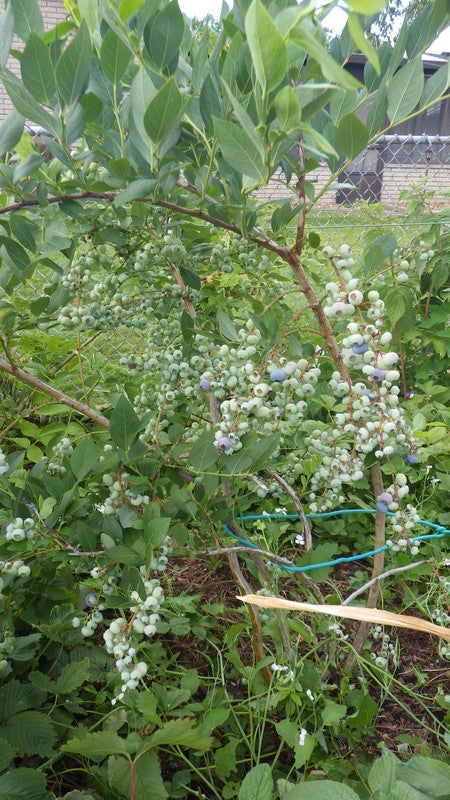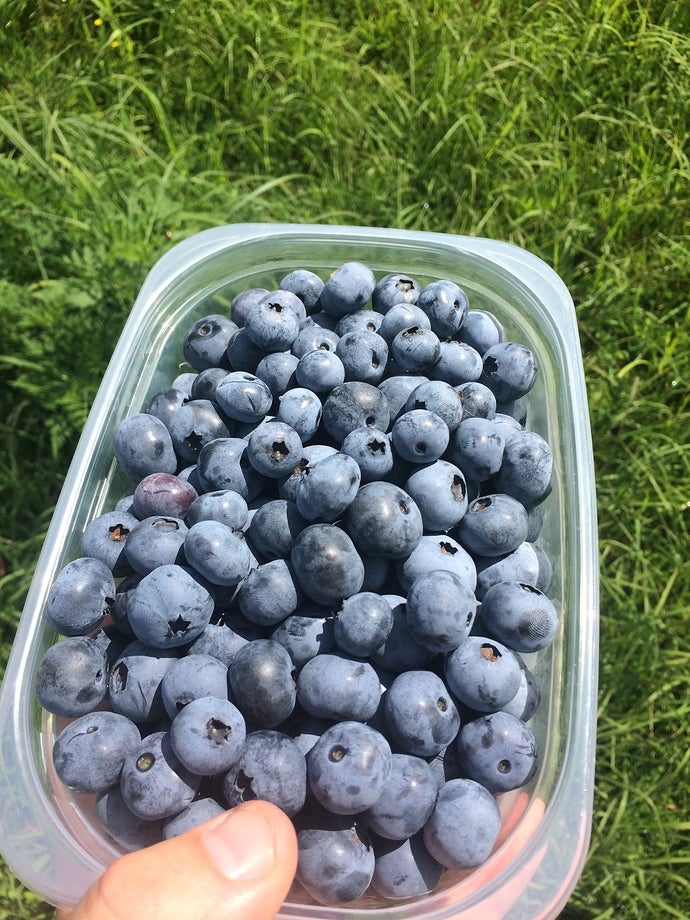Blueberries: Attractive Bushes, Nutritious Berries
Published 10:09 am Tuesday, April 28, 2020
|
Getting your Trinity Audio player ready...
|
Max Phelps
Yards to Paradise
A few blueberry plants in the landscape can look good as many other landscape plantings. A few ripe homegrown blueberries fresh from the bush in your own yard will maximize the good taste, the vitamins and other healthful properties of these native fruiting plants. Let’s look at the benefits of blueberries, and also how we can incorporate these plants successfully into our landscapes and gardens.
Blueberry fruits are nutritious, high in Vitamin C, antioxidants and are also very tasty.
The blueberry is one of the native fruits that are delicious, nutritious, versatile and can be eaten fresh, frozen, made into pies, jams, muffins, wine and dried like raisins. The wild blueberries are usually quite small, but often more flavorful and can be found in many areas of the eastern and northern United States. Improved cultivars, especially developed for large berries and ease of harvest, are typically sold at garden centers in containers, or are sold by mail order or online as bare root plants only available in late winter and early spring.
The bushes vary from short to around 12 feet tall. There is lowbush, northern and southern highbush, and rabbiteye blueberries. The rabbiteye do wonderful where temperatures stay above zero in winter, but not south of where it gets into the lower 20’s in winter. Southern highbush varieties are being continually experimented with, so let’s just say, some can be grown into most parts of Florida except the Keys. Northern highbush are preferred for zones 5 and 6 in the Eastern U.S. There are more than 50 commercially available cultivars of northern highbush blueberries. Then, for the more northern reaches of the country, there are the lowbush blueberries and also huckleberries. These can often tolerate 30 or 40 below zero. Quite a few hybrids have been developed in Minnesota and Michigan and Maine where the highbush and lowbush are crossed for a hardy plant with good size and nice berries. Those make suitable plants for containers and small spaces even in Kentucky and nearby states.
What is needed for successful growing of blueberries at your place?
1) Sunshine. Plants grow fine in part shade but for largest crops plant in full sun.
2) Water. Blueberries need good drainage, but not drought conditions. This often means some watering to get plants established, and in future years for best crops.
3) Acidic soil. Blueberries prefer 4.5 to 5.5 pH, which is very acidic soils (the opposite of limestone soils or high sodium soils of dessert areas). Improving the soil with peat moss and sulfur or aluminum sulphate and bloodmeal are suggestions…along with deep tillage before planting. (No lime or wood ashes.)
4) Pruning. Light pruning early, but all limbs over 6 years old removed. Blueberries make clumps with many limbs; some thinning of old limbs is very useful to large crops and long bush life.
5) Mulch and Fertilizer. About three inches of wood chips or straw or other mulch, and some very light applications of fertilizer will be needed for best results. Keep mulch from being piled up against the trunks of the bushes, but the cooling of the soil and moisture retention of mulch out in the drip zone will be very helpful.
Some blueberries are self fruitful, but most varieties need cross pollination from another variety that blooms at a similar time. So, figure on planting two or more different varieties. When landscaping, keep in mind shorter plants in front, larger plants in back, or use repetition such as 5 plants that turn yellow in the fall, one that turns red, five more that turn yellow, or whatever scheme you decide on. You’ll need to research the characteristics of the various cultivars to come up with the best of all worlds when it comes to selecting and properly planting your blueberry bushes for the nicest look.
Late blooming means higher odds of escaping spring frosts. The southern highbush varieties will do OK farther north, but with the caveat that they may bloom out too early and get frostbitten. I have found the Sunshine Blue to work in Kentucky same as in North Florida—a dependable variety, tolerant of multiple conditions, but with below average quantity of berries.
Mature blueberry bushes can produce from around 6 pints of fruit to upwards of 20 per year. Reka, Briggita and Elliott are among the heaviest bearers…but sometimes the heavy set of fruit means smaller berries even though the total harvest will be large. Chandler bears the largest berries, some over the size of quarters. Spartan, Dixie, Blueray and Darrow are additional varieties with exceptional sized berries.
Blueberry plantings should bear the second or third year and begin to have a full crop by year six.
Recent study of the blueberry suggests additional benefits of reducing cholesterol, reducing urinary tract infections, and even slowing aging. While I can’t vouch for all the studies and claims, I do know blueberry plants can look nice in the landscape and are a real sweet treat fresh off the bush in your own yard. I suggest you plant a couple of these at the first opportunity, and if you are a big blueberry fan, then I recommend starting with a dozen or so. Plant anytime, but especially in fall, from containers. Plant in late winter or in the springtime if the plants are shipped bare-root to you. Don’t be afraid to try growing blueberries, they aren’t as difficult as some people will tell you they are. If you can grow azaleas, you probably can grow blueberries. Try some soon.
Visit www.rockcastles.net for more information.







